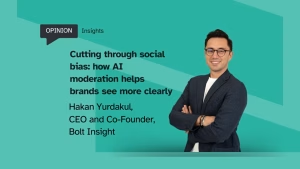By Ashley Carr, Founder and Managing Director of Neo PR
With most forms of marketing either in decline or at least going through a dramatic refocus, PR remains steadfast as the one-to-many communication method for businesses. Indeed, as a resurgence in the consumption of news – especially local news – and with an audience sat at home online, PR has become the supercharged tool in the marketing toolbox. Selling has always been a game of persuasion in the business to business world and thought-provoking content delivered through the media, traditionally and via other platforms, such as social media, is key.
Audiences are proven to buy on referral or from trusted brands, and so are far more receptive to marketing messages and mediums once trust has been established. Thought leadership content has become vital for businesses, allowing them to contribute to industry conversation by speaking directly to the market about existing issues.
This has become the new marketing currency to get involved in the conversation and be heard above the background noise. Positioning brands and/or businesses as experts within the industry is key to communicating with their audience, while reaffirming the trust between brand and consumer.
Rise in Media Consumption
At the start of lockdown, consumers were inundated by brands pushing major sales or letters from CEO’s explaining the lockdown and the status that their business was in to reassure their database. Throughout the pandemic, media has remained the primary influencer, meaning that marketing and PR teams output were more vital than ever. Due to this, businesses were able to reinvent their messaging and output by reviewing customer data and feedback, while utilising marketing automation tools to create a more personalised message, thus contributing to a stronger relationship between companies and consumers.
The industry shake-up
As social distancing and lockdown restrictions began, face to face meetings were put on hold and tradeshows disappeared, forcing them to be hosted on an online platform. Yet, do they have the same effect? Event organisers were desperate to continue to retain advertising campaigns, floor space and sponsorship surrounding shows and keep the networking element as a key contributing factor to a virtual show, and so, the event organisers and exhibitors had to be really creative. The demise of trade shows was a hot topic (and still is) within many industries, given the fact that between 1000 – 100,000 people attended them, they were and are seen as Covid-19 breeding grounds. The lack of this physical interaction and change to digital forms of communication has been a challenge for businesses.
Marketing, advertising and PR budgets were the first costs to be cut in the first lockdown and brands had to rethink how to reach their audience. Additionally, according to a recent survey from the World Federation of Advertisers, statistics found that during Covid, more than 80% of large advertisers paused their advertising campaigns. And, nearly 60% decreased their budgets.
PR agencies used this time to reinvent their clients through more creative ways such as thought leadership, a blog series or creating a more personable brand experience. Now, audiences are more fragmented due to the rise in social media platforms. Traditional marketing is less valuable in the current climate, and so, where there is a crisis, there is also opportunity, and the most innovative, forward-thinking companies could still find ways to promote their brands to consumers, using PR.
Conclusion
Creating a collaborative and solid internal communication channel within your business has proven to be vital throughout 2020. PR has played a key role in continuing to connect to audiences and prospects alike for businesses, especially throughout a global pandemic, audiences relied on the brands they trust to continue to channel communication.
Post pandemic, it is clear that the lines of communications should continue to stay strong between businesses and consumers. Building trust, relationships and establishing reputation supports businesses end goals by retaining customers and more importantly, creating new ones.










